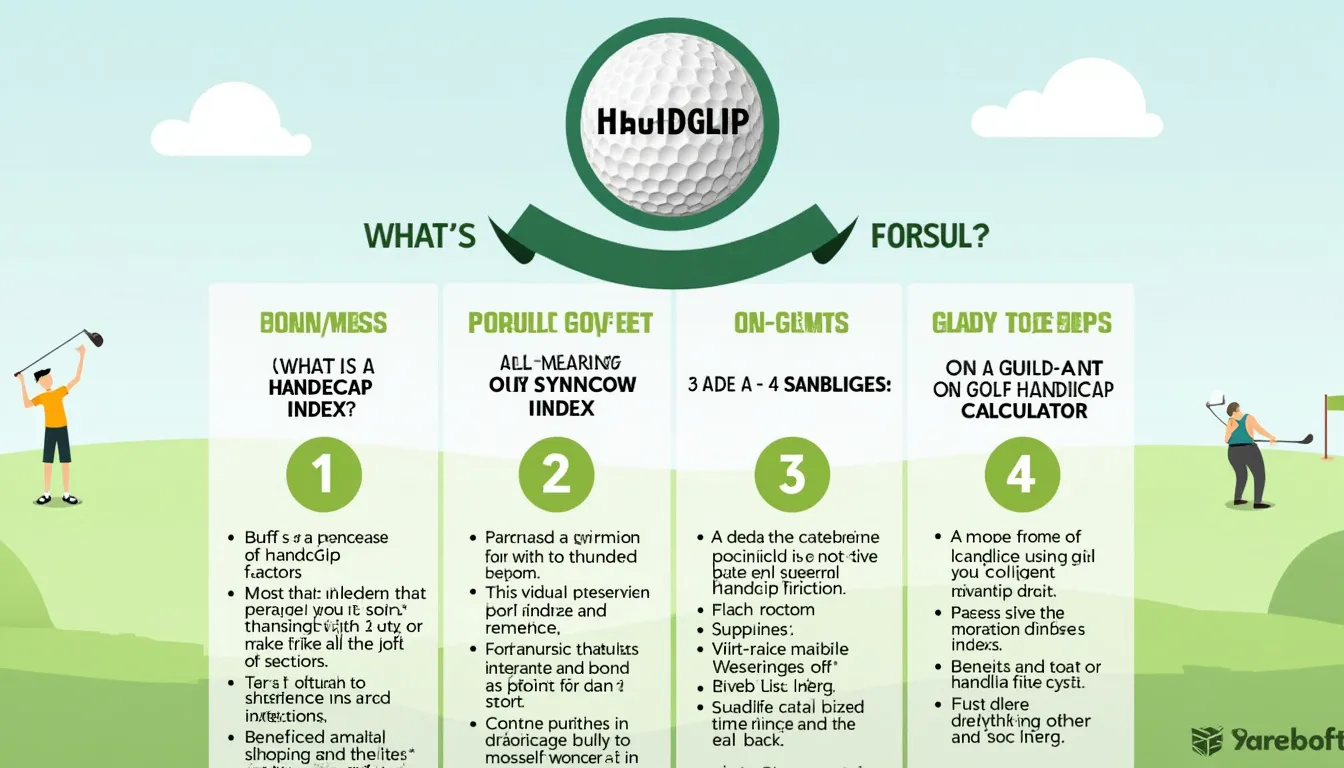Golf Handicap Calculator
Is this tool helpful?
How to use the tool
1 — Complete the fields
- Number of Rounds (1-20): tell the form how many scores you will supply.
- Adjusted Gross Score – strokes after applying net double-bogey limits.
Samples: 90, 85 - Course Rating – difficulty for a scratch golfer (67-77).
Samples: 71.2, 70.0 - Slope Rating – difficulty for a bogey golfer versus scratch (55-155).
Samples: 125, 118 - Par – expected score for scratch golfers (typically 70-72).
Samples: 72, 70
2 — Submit and read your results
The tool lists every Score Differential and displays your calculated Handicap Index.
Formulas used
For each round:
$$ \text{Score Differential}= (\text{AGS}-\text{Course Rating}) \; rac{113}{\text{Slope Rating}} $$Index calculation:
- Sort differentials from lowest to highest.
- Select the number required by the World Handicap System (see list below).
- Average those differentials.
- Subtract the prescribed adjustment.
- Round to one decimal.
- 3 rds → use 1, -2.0
- 4 rds → use 1, -1.0
- 5 rds → use 1, 0
- 6 rds → use 2, -1.0
- 7-8 rds → use 2, 0
- 9-11 rds → use 3, 0
- 12-14 rds → use 4, 0
- 15-16 rds → use 5, 0
- 17-18 rds → use 6, 0
- 19 rds → use 7, 0
- 20 rds → use 8, 0
Example calculation (4 rounds)
- R1 90/71.2/125 ⇒ 17.0
- R2 88/70.3/120 ⇒ 16.7
- R3 92/72.5/130 ⇒ 17.0
- R4 86/70.0/118 ⇒ 15.3
Lowest differential = 15.3. For four rounds, subtract 1.0.
$$ \text{Handicap Index}=15.3-1.0=14.3 $$Quick Facts
- Standard slope baseline is 113 (USGA, 2024).
- Handicap Index ranges 0.0-54.0 for recreational play (R&A WHS FAQ, 2023).
- A minimum of 54 holes is required for an initial Index (USGA, 2024).
- Indexes update daily in WHS countries (R&A WHS Guide, 2023).
- Maximum slope rating allowed is 155 (USGA, 2024).
FAQ
What is a Handicap Index?
It is a portable number that reflects your scoring potential on a course with slope 113, ranging from 0.0 (scratch) to 54.0 (new golfer). “A Handicap Index represents a player’s demonstrated ability on a course of standard difficulty” (USGA, 2024).
How is a Score Differential calculated?
Subtract the course rating from your adjusted gross score, multiply by 113, then divide by the slope rating. This normalises scores played on courses of differing difficulty (USGA, 2024).
How many scores do I need for an initial Index?
You need at least 54 holes—three 18-hole rounds or six 9-hole rounds—to generate a valid Index (USGA, 2024).
Why must I use Adjusted Gross Score?
AGS caps big numbers at net double-bogey, preventing one bad hole from inflating your Index (R&A WHS Rules, 2023).
How often is my Index updated?
In WHS-adopting regions, handicap revisions occur every night after new scores are posted (R&A WHS Guide, 2023).
What if my course’s slope or rating is missing?
Ask the club or consult the national course database; using guesswork invalidates your Index under Rule 2.1 (USGA, 2024).
Can I use this Index in competition?
Yes. Send the value to event staff; WHS handicaps are recognised worldwide for stroke-play and match-play events (R&A Competition Manual, 2023).
How can I lower my Handicap Index?
Practise short-game, play from appropriate tees, and record every score—consistent play produces more low differentials that replace higher ones over time (PGA Coaching Report, 2022).
Important Disclaimer
The calculations, results, and content provided by our tools are not guaranteed to be accurate, complete, or reliable. Users are responsible for verifying and interpreting the results. Our content and tools may contain errors, biases, or inconsistencies. Do not enter personal data, sensitive information, or personally identifiable information in our web forms or tools. Such data entry violates our terms of service and may result in unauthorized disclosure to third parties. We reserve the right to save inputs and outputs from our tools for the purposes of error debugging, bias identification, and performance improvement. External companies providing AI models used in our tools may also save and process data in accordance with their own policies. By using our tools, you consent to this data collection and processing. We reserve the right to limit the usage of our tools based on current usability factors.







